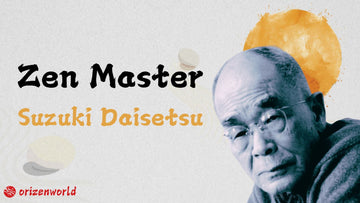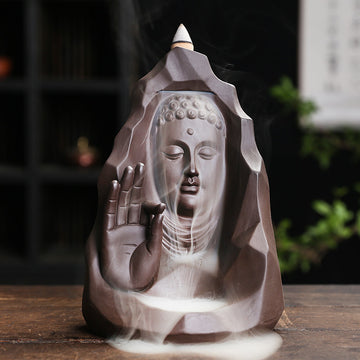Buddha statues have become a popular addition to yoga studios, Zen spaces, and meditation rooms in recent years. Their serene appearance serves as a gentle reminder to remain calm and embrace wisdom in daily life. These statues embody peace, mindfulness, and balance, making them ideal for creating a tranquil atmosphere.
In today’s article, I’ll share more about Buddha statues, including their symbolism, variations, and placement tips. There are many fascinating aspects to explore, from the stories behind their designs to their cultural significance. Whether you’re a spiritual enthusiast or simply curious, join me on this journey to discover the deeper meaning and inspiration behind Buddha statues. Let’s delve into their timeless charm and significance together!
The origin of Buddha statues can be traced back to ancient India, where Buddhism was founded by Siddhartha Gautama (the Buddha) in the 6th century BCE. In its early days, Buddhism did not incorporate idol worship; instead, symbols like the Dharma Wheel, Bodhi Tree, and footprints were used to represent the Buddha. These abstract representations reflected the core teachings of Buddhism and were revered by followers as a means to focus on spiritual principles.
The emergence of Buddha statues began around the 1st century CE, influenced by the Gandhara and Mathura schools of art. In Gandhara, located in present-day Pakistan, Buddha statues adopted Hellenistic artistic styles, featuring intricate drapery, curly hair, and serene expressions. Simultaneously, the Mathura school in India produced statues with a simpler aesthetic, emphasizing the spiritual essence of the Buddha. These early depictions laid the foundation for the evolution of Buddha art across cultures.
Buddha statues achieved artistic refinement during the Gupta dynasty (4th–6th centuries CE) in India. This era is celebrated for its elegant, harmonious designs that epitomized spiritual tranquility. Gupta-style statues became the blueprint for Buddhist art in regions like Southeast Asia, Central Asia, and China, as Buddhism spread along the Silk Road.
In China, the development of Buddha statues began during the Han dynasty and flourished in the Tang dynasty. Sites like the Longmen Grottoes and Yungang Grottoes became major hubs of Buddhist sculpture. Tang-era statues were distinguished by their detailed craftsmanship, serene expressions, and a unique blend of Indian and Chinese influences, marking a high point in Buddhist art.
As Buddhism expanded to Southeast Asia, local cultures infused their own traditions into Buddha statues. Thailand’s elongated, flame-like head ornamentation, Cambodia’s intricate carvings in Angkor Wat, and Myanmar’s golden pagoda statues are iconic examples. Each variation reflects the adaptability of Buddhism while retaining its core message of enlightenment and inner peace.
Buddha statues reflect the spiritual essence and artistic heritage of the regions they originate from, embodying diverse interpretations of Buddhism. From India’s classical origins to the intricate artistry of East Asia and Southeast Asia, these statues are more than religious icons; they serve as profound cultural symbols.
India is the birthplace of Buddha statues, with styles evolving across centuries. The Gandhara style (1st–3rd centuries CE) reflects Greek influence, showcasing realistic features, wavy hair, and elegant proportions. In contrast, the Mathura style emphasizes simplicity and spiritual depth, often using sandstone for statues with serene expressions. By the Gupta period (4th–6th centuries CE), Buddha statues reached an artistic peak, marked by refined proportions, peaceful expressions, and sophisticated craftsmanship in stone and bronze.
Chinese Buddha statues evolved uniquely through history. Early Han and Wei dynasties (4th–6th centuries CE) saw influences from Central Asia, with elongated faces and solemn expressions, as evident in the Yungang and Longmen Grottoes. The Tang dynasty (7th–9th centuries CE) celebrated the zenith of Buddhist art, producing statues with full figures, kind expressions, and intricate details, exemplified by the Leshan Giant Buddha.
In Southeast Asia, distinct styles emerged, reflecting local traditions. Burmese Buddha statues, such as those from Bagan (9th–13th centuries CE), are known for their meditative poses and marble craftsmanship. Thai Buddha statues from the Sukhothai period (13th–15th centuries CE) are slim with graceful features, often depicting the Buddha in "earth-touching" gestures. Cambodian Buddha statues, particularly from Angkor Wat, blend Khmer aesthetics with detailed carvings and serene expressions.
Tibetan Buddha statues are characterised by their rich symbolism and ornate designs. Often crafted in bronze with embedded jewels, these statues embody deities like Green Tara and Vajrapani, symbolising protection and wisdom. The statues’ decorative elements and intricate carvings highlight Tibet’s devotion and artistic depth.
Japanese Buddha statues evolved through the Asuka and Nara periods (6th–8th centuries CE) with influences from China, featuring solemn and detailed figures. By the Kamakura period (12th–14th centuries CE), realism dominated, exemplified by the iconic Great Buddha of Kamakura, symbolising the convergence of spiritual tranquility and Samurai values.
These cultural variations highlight the adaptability of Buddhist art, reflecting both universal teachings and the unique traditions of each region. Through their diversity, Buddha statues remain enduring symbols of spirituality and enlightenment worldwide.
Buddha statues often depict hand gestures, or mudras, each carrying profound symbolic meanings. These gestures convey spiritual teachings, practices, and values, offering insight into the Buddha’s path. Among the most iconic is the Dhyan Mudra, where hands rest in a meditative pose, symbolising inner peace and contemplation. Similarly, the Varada Mudra, with an open palm extended downward, represents compassion, charity, and the granting of wishes.
Other mudras hold unique messages. The Gyan Mudra, formed by touching the thumb and index finger, symbolises wisdom and knowledge, essential to achieving enlightenment. The Apana Mudra, with fingers pointing downward, represents cleansing and the release of negative energy, guiding devotees toward spiritual purification. The Karana Mudra, with fingers extended as if warding off evil, signifies protection and the dispelling of negativity.
Beyond the hands, Buddha statues incorporate other meaningful elements. The Buddha’s calm expression reflects serenity and unshakable focus, while his elongated earlobes suggest detachment from worldly possessions and a life of spiritual awareness. The urna, a subtle mark on the forehead, symbolises the third eye, representing divine vision and insight.

These intricate details and postures combine to communicate the Buddha’s teachings and values, providing inspiration and guidance for practitioners across the world. Each mudra is a reminder of the virtues that lead to enlightenment and inner harmony.
The craftsmanship of Buddha statues reflects centuries of tradition and innovation, with the choice of materials playing a pivotal role in their appearance and spiritual resonance. Traditional materials like wood and bronze have long been favoured for their durability and aesthetic appeal. Wooden statues, often hand-carved with intricate details, exude warmth and an organic connection to nature. Bronze, on the other hand, is prized for its ability to capture fine details and its enduring shine, lending an aura of permanence and reverence.
In addition to wood and bronze, precious materials like jade and ceramic elevate the artistic and cultural value of Buddha statues. Jade statues, associated with purity and immortality, are particularly revered in East Asia. Their smooth, cool surface and translucent quality evoke a sense of calm and sacredness. Meanwhile, ceramic statues, often adorned with vibrant glazes, highlight the fusion of artistry and spirituality, especially in regions like China.
Modern craftsmanship has introduced innovative materials like sand-gravel, offering a new dimension to Buddha statue creation. This material mimics the texture and appearance of vintage stone, providing a rustic and timeless aesthetic. Sand-gravel is particularly suited for small- to medium-sized statues, bringing a sense of history and authenticity to contemporary spaces.
Whether traditional or modern, the materials chosen influence not only the visual appeal but also the spiritual aura of the Buddha statue. They embody the devotion, artistry, and evolving creativity of their creators, ensuring that these symbols of enlightenment continue to inspire across generations.
More and more people are incorporating Buddha statues into their daily lives, and I’d like to share some of the most popular types with you.
Among the most beloved is the Laughing Buddha, known for his joyful expression and round belly. Often depicted holding gold coins or a sack of treasures, the Laughing Buddha is considered a symbol of happiness, abundance, and prosperity. It is common to place his statue in homes or businesses to attract good fortune and positivity.
The Meditating Buddha, in contrast, embodies serenity and inner peace. Typically shown seated in the lotus position with hands in the Dhyan Mudra, this statue serves as a reminder of mindfulness and the pursuit of enlightenment. It is often placed in meditation spaces or gardens, offering a calming presence to those who seek spiritual harmony and reflection.
Another increasingly popular type is the Baby Buddha statue, which portrays the Buddha as a charming, childlike figure. These statues, often associated with the innocence and purity of new beginnings, symbolise rebirth and the potential for growth. Their adorable appearance makes them a favourite in homes and among collectors, blending spiritual significance with aesthetic appeal.
From the joyful Laughing Buddha to the tranquil Meditating Buddha and the endearing Baby Buddha, these statues cater to diverse spiritual and decorative purposes, bringing beauty and meaning to any setting.
Adding a Buddha statue to your space is a meaningful way to express faith and invite harmony. Whether for spiritual energy or aesthetic appeal, proper placement enhances the statue’s significance and your connection to it.
Selecting the Right Location
For the home, the living room or a dedicated meditation area is ideal for placing a Buddha statue, allowing its energy to flow through the space. Avoid private areas like bedrooms or bathrooms, as these are less appropriate for reverence. In gardens, placing a Buddha statue amidst greenery can create a serene atmosphere and serve as a focal point for peace.
Positioning and Direction
When positioning a Buddha statue, ensure it faces a central area or entrance to symbolise welcoming wisdom and positivity. The statue should be elevated, not placed directly on the floor, to show respect. In Feng Shui, leaving space around the statue promotes energy flow, with the left side ideally more open than the right.
Maintenance and Offerings
Keep the statue clean and its surroundings uncluttered to maintain a sense of purity. Adding bonsai, candles, or incense burner enhances the spiritual atmosphere. For vehicles, place a small Buddha statue facing forward, signifying guidance and protection.
Incorporating a Buddha statue thoughtfully can transform your space into a sanctuary of balance, mindfulness, and spiritual energy.








